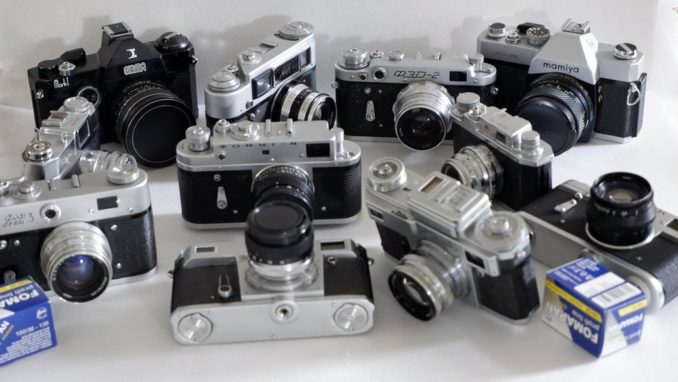In Part One of this saga I talked about how I got hooked on photography and how the camera collecting bug bit me.
In this part I will talk about digital photography and how this bug has never relaxed its grip.
I had bumbled along since getting my first proper camera, shooting hundreds of cassettes of film, Black and White and Colour transparencies (slides) but was interested in the new technology that was emerging – partly because I now had some disposable income but also because I could change from a “wet process” using chemicals to a dry process using the computer.

My first digital camera buy was a Fujifilm MX1700, a 1.5 megapixel monster, bought mainly because I had used, and loved the colours of, Fuji Velvia film. This camera is small enough to be pocketable and I took it out when I went out with my film cameras. I liked the idea, the photos were crude by modern standards but I loved the idea of taking a picture and having it on the screen straight away.
I used it primarily to check the exposure that I was going to use for the film cameras, but I quickly became enamoured of the pictures it took.
The Fuji colours were lovely and rich and so, when the Fujifilm S602Zoom bridge camera came out I bought one.

This camera served me well for 6 years or so until I was left some money in a will.
There was a decision to be made, buy a camera or waste the money – so I bought a Nikon D50.

Once you have one Nikon and lenses…….well, you can see where this is going, I bought another, a D80.


These are specialist lenses, picked up along the way, now part of my growing collection!
I still have, and use, those DSLRs and early Fuji cameras, but recently I have missed the rangefinder style camera, so out came the wallet and I have bought into the Fujifilm Mirrorless X-Mount system.

I now have an X-E1,

an X-E2s

(you can see where this is going, can’t you?)
and an X-A5, together with lenses.


What is a Mirrorless Digital Camera?
Unlike a DSLR, a Mirrorless camera doesn’t have a mirror in the lens to sensor path which has to flip up out of the way to allow the sensor to “see” the image.
This mirror takes up space in the camera and as a result the DSLR lens is mounted further away from the sensor, usually somewhere in the region of 40mm or so. A mirrorless lens is only about 15mm away from the sensor, so all you have to do to adapt one to the other is have a light tight tube with a suitable lens fitting on one end and a suitable camera body fitting on t’other.
These adapters usually have no electronic connection, or glass, in them, they are literally just a tube that joins the lens to the camera.
They are cheap, from around £5 for an unbranded one to around £25 for a “Named” brand.
The more expensive ones are really no better than the cheap ones, as long as they are made of metal (usually anodised aluminium and/or brass) and fit well they all do the same job.
The beauty of the mirrorless system is that all the lenses that I have collected over the years can be used, with these simple adapters, on my X-Mount cameras.

The list of mirrorless cameras is growing – all the well known makers are moving into mirrorless, Nikon, Canon, Fuji, Sony, Panasonic, Olympus and many more have ranges to suit every budget and you can get adapters to fit almost any lens to all of these cameras.
My personal choice is Fujifilm – I love the colours that these cameras produce.
Adapted, these lenses become manual, obviously.
No auto focus, no auto aperture, but that is how I learned all those years ago.
Is this a retrograde step? I don’t think so, it forces me to think about what I’m doing and consider the subject rather than just “Snap and Go”
The question as to WHY use old film lenses (and to some extent, Digital SLR lenses) on modern Mirrorless digital cameras is easy to answer.
These old lenses have what some people might call flaws in their construction, while others might call it character. They might not be as pin sharp in their focus, they might have a curious background blur (called Bokeh and pronounced to rhyme with a cross between Poker and Bouquet). They might render colours slightly warmer or cooler than a modern computer designed lens. They might come in a focal length which is unobtainable for your camera from modern lens makers.
One thing that they are, however, is CHEAP. Some of these old lenses can be found, second hand, for a few quid. You might, like me, already have a lot of lenses tucked away from old, long forgotten kit. You might have a relative or friend who has some lying around.
They all make beautiful, artistic, film like images – with a quality that you see in coffee table books on photography.
If you have a mirrorless digital camera, grab any and all lenses that you can get your hands on, pick up a suitable adapter and really learn how to take, and make, great photographs.

I have enjoyed, and still enjoy, my hobby, have made money from it, have bought and sold some good cameras along the way and hope to enjoy it for many years to come.

All photographs in this article are Copyright © Grimy Miner 2020 and are licensed for use in this article only.



